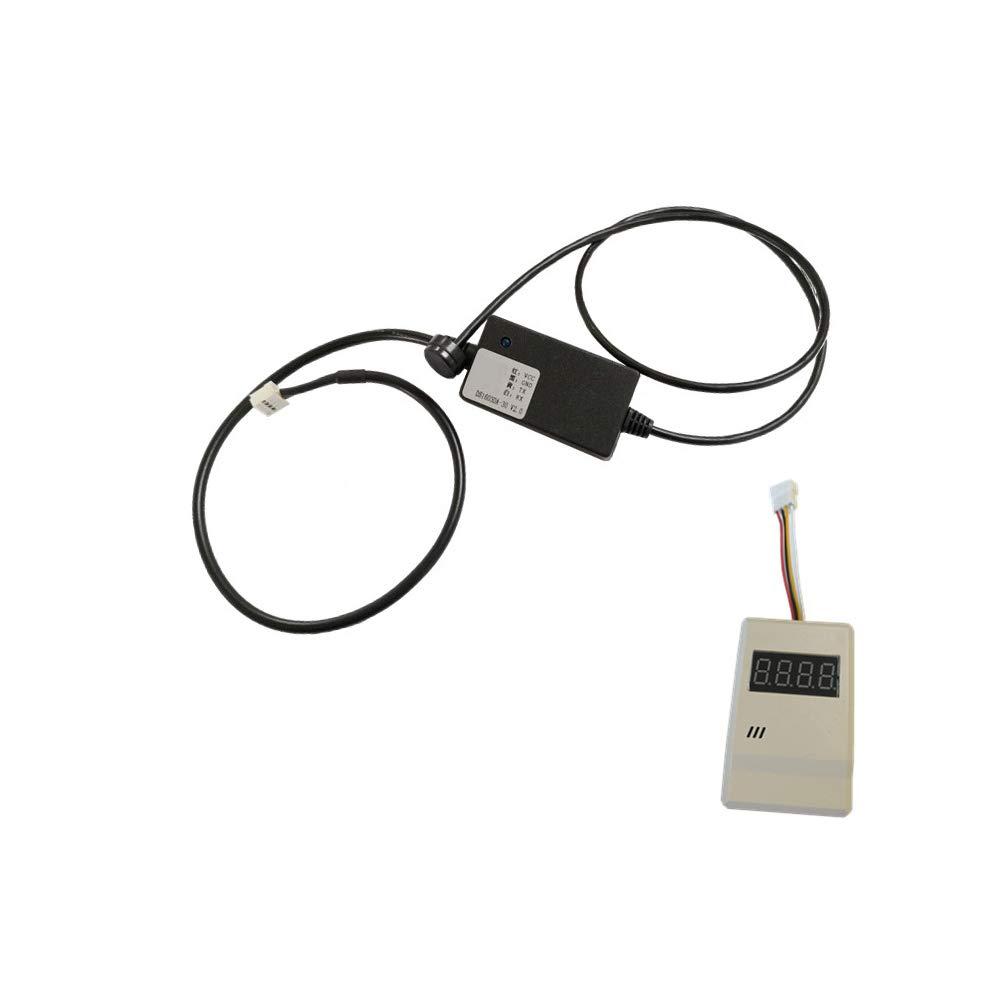
A portable liquid level indicator, also known as liquid level gauge or dipstick, refers to a compact and mobile device designed to measure and display the level of liquid in a container or tank. It typically utilizes sensors or probes to detect the liquid’s height and converts this data into a visual representation, such as a digital readout or indicator lights. This device offers convenience and versatility, allowing users to easily monitor fluid levels in various applications, such as water tanks, fuel containers, or industrial vessels. Its portability enables effortless transportation and usage in different locations, making it a practical tool for accurate liquid level monitoring on the go.
Let us discuss the working principles of two common types of portable liquid level indicator: sight glass indicators and float-type indicators.
1.Sight Glass Indicators – Sight glass indicators are straightforward devices that allow visual observation of the liquid level inside a container. They consist of a transparent tube or sight glass mounted vertically on the side of the tank or container. The working principle of a sight glass indicator is based on the hydrostatic pressure of the liquid.
When the container is filled with liquid, the liquid level inside the sight glass will rise to the same level as the liquid in the tank due to the pressure exerted by the liquid’s weight. Users can read the liquid level directly from the sight glass, which typically has markings or indicators to indicate the level.
Sight glass indicators are commonly used for non-toxic and non-corrosive liquids. They are inexpensive, easy to install, and require minimal maintenance. However, they might not be suitable for corrosive or hazardous liquids, as the material of the sight glass may be incompatible with certain substances.
2.Float-Type Indicators – Float-type liquid level indicators are more versatile and can handle a wider range of liquid types, including corrosive and hazardous liquids. They consist of a float that floats on the liquid’s surface and is connected to a calibrated rod or tape, which extends outside the container or tank. The working principle of float-type indicators is based on buoyancy.
The float is designed to be buoyant and rises or falls with the liquid level in the tank. As the liquid level changes, the float moves accordingly, causing the rod or tape to move up or down. The external part of the rod or tape usually has markings indicating the liquid level. Users can read the liquid level by observing the position of the markings relative to a reference point on the indicator.
Float-type indicators can be constructed with various materials, such as stainless steel or plastics, to suit different liquid properties and tank environments. Some float-type indicators also incorporate magnetic mechanisms that transmit the float’s position to a magnetic level gauge outside the container, providing a continuous liquid level reading.
Conclusion – Portable liquid level indicators are essential tools for measuring the level of liquid in tanks and containers in various industries. Sight glass indicators work based on hydrostatic pressure and provide a direct visual indication of the liquid level, while float-type indicators rely on buoyancy and use a float connected to a calibrated rod or tape for level measurement. Each type has its advantages and limitations, so the choice of the indicator depends on the specific application and the properties of the liquid being measured.
RELATED ARTICLES
Latest Articles
 Mastering the Art of Machine Vision: Choosing the Perfect Lens for Optimum PerformanceIn TechnologyMay 2, 2024Key Takeaways: Machine vision is a technology that […]
Mastering the Art of Machine Vision: Choosing the Perfect Lens for Optimum PerformanceIn TechnologyMay 2, 2024Key Takeaways: Machine vision is a technology that […] Unlocking Success: Mastering Bank PO Interview PreparationIn EducationApril 24, 2024For banking careers, PO interviews stand as formidable […]
Unlocking Success: Mastering Bank PO Interview PreparationIn EducationApril 24, 2024For banking careers, PO interviews stand as formidable […] The Strategic Value of Purchasing FontsIn TipsApril 18, 2024In today’s visually driven world, fonts are more […]
The Strategic Value of Purchasing FontsIn TipsApril 18, 2024In today’s visually driven world, fonts are more […] Revolutionizing Business: How AI Transforms Customer Experience in the Inflatable IndustryIn BusinessApril 16, 2024Inflatable water slides are the epitome of summer fun, […]
Revolutionizing Business: How AI Transforms Customer Experience in the Inflatable IndustryIn BusinessApril 16, 2024Inflatable water slides are the epitome of summer fun, […] Most Asked Microservice Interview Questions For 2024In TechnologyApril 2, 2024To keep up with changing trends in the tech industry […]
Most Asked Microservice Interview Questions For 2024In TechnologyApril 2, 2024To keep up with changing trends in the tech industry […] Best JavaScript and CSS Library In 2024In TechnologyApril 2, 2024With the ever-expanding functionality of web […]
Best JavaScript and CSS Library In 2024In TechnologyApril 2, 2024With the ever-expanding functionality of web […] Front-End Development Trends to Follow in 2024In TechnologyApril 2, 2024For better engagement, the front-end development of […]
Front-End Development Trends to Follow in 2024In TechnologyApril 2, 2024For better engagement, the front-end development of […] Simplifying Mealtime: Meal Prepping for a Family of FourIn UncategorizedMarch 22, 2024In the hustle and bustle of daily life, planning and […]
Simplifying Mealtime: Meal Prepping for a Family of FourIn UncategorizedMarch 22, 2024In the hustle and bustle of daily life, planning and […] How to Freeze Dry Candy With And Without a Machine?In FoodFebruary 27, 2024A candy lover constantly searches for novel and […]
How to Freeze Dry Candy With And Without a Machine?In FoodFebruary 27, 2024A candy lover constantly searches for novel and […] How to Get Something Out Of Your Eye Immediately?In healthFebruary 27, 2024Getting something inside your eyes can be frustrating […]
How to Get Something Out Of Your Eye Immediately?In healthFebruary 27, 2024Getting something inside your eyes can be frustrating […] The Evolution of Remote Control Technology: From RC Cars to DronesIn TechnologyFebruary 22, 2024Remote control technology has come a long way since […]
The Evolution of Remote Control Technology: From RC Cars to DronesIn TechnologyFebruary 22, 2024Remote control technology has come a long way since […] Unveiling the most popular carnival costumes: A colorful parade of creativityIn FashionFebruary 19, 2024In the world of festivities and merrymaking, few […]
Unveiling the most popular carnival costumes: A colorful parade of creativityIn FashionFebruary 19, 2024In the world of festivities and merrymaking, few […]
stopie.com is a participant in the Amazon Services LLC Associates Program, an affiliate advertising program designed to provide a means for sites to earn advertising fees by advertising and linking to Amazon.com.
Clicking on an Amazon link from stopie.com does not increase the cost of any item you purchase.
We will only ever link to Amazon products that we think our visitors may be interested in and appreciate learning more about.



